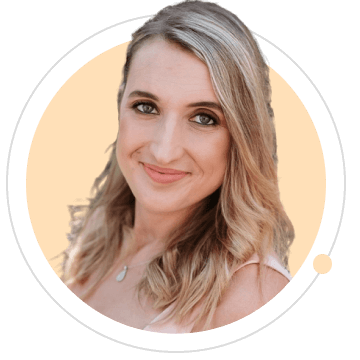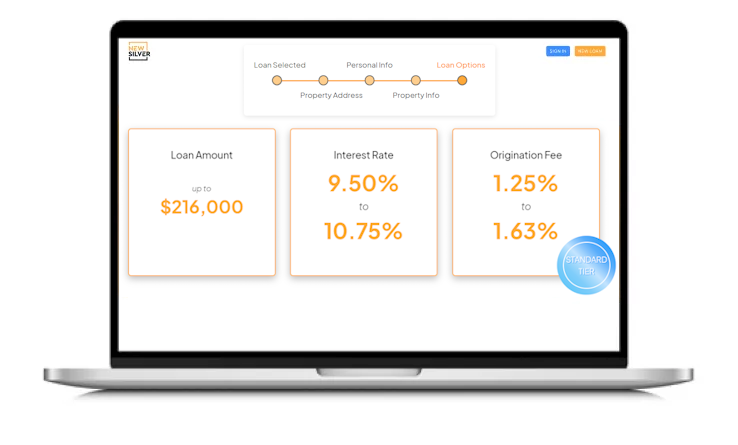Flipping houses can be one of the fastest ways to generate six-figure profits, but the real secret isn’t just in buying low and selling high—it’s about finding the right deals, using smart renovation strategies, and leveraging other people’s money to maximize returns.
Let’s break down a real-life house flip that netted $150,000 in profit—with zero money out of pocket. You’ll see exactly how the deal was found, funded, and flipped, plus how you can apply these same techniques to your own real estate investments. Whether you’re just starting out or looking to scale, these strategies will show you how to flip smarter and make bigger profits per deal. Let’s dive in!
How Jerry Norton Made $150,000 Net Profit on a House Flip
Jerry Norton shared the key points as to how he made a solid $150,000 net profit on this flip in Puerto Rico.
1. The Power of Agent Relationships: Securing Off-Market Deals 👩💼
One of Jerry’s biggest advantages in this flip was his relationship with a real estate agent who consistently brought him off-market deals. The property came to him as a pocket listing—a deal not yet listed publicly—allowing him to purchase it before anyone else had a chance to bid. This was the sixth deal Jerry had done with this agent, highlighting the importance of building strong agent relationships to secure below-market properties before they hit the MLS.
In this case, Jerry’s agent secured both sides of the commission — earning 2.5% commission as the listing agent and 2.5% as the buyer’s agent for a total of 5% commission ($25,000).
2. Breaking Down the Purchase Price: Why $508,000?💲
To ensure a profitable flip, Jerry used a proven valuation strategy based on comparable sales (comps). Since the home was in a gated community, he only considered similar properties within the neighborhood to assess value.
At the time, two nearly identical homes were pending sale at $775,000, but they weren’t fully renovated. Based on that, Jerry conservatively estimated the ARV (After Repair Value) at $825,000.
Applying the 70% Rule:
$825,000 ARV × 70%
Minus $70,000 in rehab costs
→ Target purchase price: $508,000
Jerry initially offered $500,000 cash, but after negotiating, they settled at $508,000 cash.
3. High ROI Renovations: The 3 Biggest Value-Add Projects 🪚
Jerry focused on cost-effective upgrades that would deliver the highest return on investment (ROI) and appeal to buyers in the $800K+ price range.
✅ 1. Exterior Upgrades – $25,000
- Installed new windows, front door, and garage door to align with buyer expectations.
- Enhanced curb appeal to make the home stand out in the market.

✅ 2. Primary Bathroom Remodel – $7,500
- Fully renovated with modern tile, a new vanity, a fresh shower, new toilet and updated fixtures.
- Bathrooms are one of the top selling points for buyers, making this a high-ROI update.

✅ 3. Kitchen Refresh – $10,000
- Painted cabinets instead of replacing them to save costs. Installed quartz countertops and new stainless steel fridge, appliances (including refinishing the fridge with a black matte paint job instead of replacing it).
- Upgraded lighting fixtures, plugs and switches for a modern feel.
- The electrical budget was around $5,000.

4. The Listing Strategy That Closed the Deal 🤝
Once the renovations were complete, Jerry relisted the home with the same agent who originally brought him the deal. This streamlined the selling process and also allowed him to negotiate a commission discount, saving $20,000 in fees.
A buyer quickly came in with an $805,000 offer, which Jerry accepted.
Final Profit Breakdown:
Sale Price: $875,000
Purchase price: $508,000
Commissions: $30,000
Rehab: $70,000
Closing Costs: ~$16,000
Financing Costs: ~$29,000
Net Profit: $150,000
By leveraging agent relationships, strategic renovations, and an efficient sales process, Jerry maximized profitability while minimizing risk.
5. Funding the Deal with Zero Out-of-Pocket Costs 💰
One of the biggest myths about house flipping is that you need a lot of cash to get started. However, Jerry structured this deal with 100% financing, meaning he didn’t use a single dollar of his own money. This combination of hard money and private lending is a game-changer for flippers, making it possible to scale without tying up personal capital.
How to Make Six Figures per Deal: The Math Behind a Profitable Flip
Flipping houses can be a lucrative business, but not every deal is created equal. Some flippers make $30K to $50K per deal, while others walk away with six-figure profits. The key difference? Understanding the numbers and executing a strategy that maximizes profit margins.
Let’s break down the exact math behind a six-figure flip and how you can apply the same principles to your own deals.
1. The 70% Rule
Lorem ipsum dolor sit amet, consectetur adipiscing elit. Ut elit tellus, luctus nec ullamcorper mattis, pulvinar dapibus leo.
(ARV x 70%) – Repair Costs = Max Purchase Price
- ARV (After Repair Value): The estimated market value of the home after renovations.
- 70% Factor: Accounts for selling costs, financing, and profit margin.
- Repair Costs: The estimated budget needed to make the home market-ready.
Get a comprehensive look at the 70% rule in house flipping here.
Let’s say you’re flipping a home with an ARV of $825,000…
Step 1: Calculate the Maximum Purchase Price
💰 $825,000 x 70% = $577,500
💰 Subtract estimated repairs ($70,000) → Max purchase price: $507,500
Step 2: Negotiate a Better Deal
In this case, the flipper was able to buy the property for $558,000, slightly above the 70% threshold but justified based on market conditions.
Step 3: Sell at Maximum Value
After completing the rehab, the property sold for $875,000, leading to a $150,000 net profit after commissions, closing costs, and financing expenses.
You can calculate the ARV of your next investment property easily with this FREE tool from New Silver.
2. Renovations That Provide the Most ROI
Not every home needs a full-scale renovation. The key to maximizing profits is focusing on high-impact, cost-effective updates that increase the home’s value without breaking the budget.
Which renovations add the most value?
- Curb appeal & exterior upgrades (windows, doors, landscaping)
- Kitchen refresh (painted cabinets, new countertops, upgraded appliances)
- Bathroom remodels (modern tile, vanity, and fixtures)
- Light staging (budget-friendly furniture & decor to attract buyers)
3. Bigger Deals = Bigger Profits
Many flippers start small, working on properties with an ARV of $200K-$300K. While these deals can be profitable, the effort involved is almost identical to flipping a home in the $500K-$800K range—but with three times the profit potential.
Example Comparison:
| ARV | Purchase Price | Rehab Cost | Profit |
|---|---|---|---|
| $300,000 | $210,000 | $50,000 | $50,000 |
| $800,000 | $560,000 | $70,000 | $150,000 |
Lesson: The same process—finding, financing, renovating, and selling—can yield significantly higher profits if you target higher-value homes.
4. How to Flip with None of Your Own Money
Many aspiring house flippers believe that a hefty cash reserve is necessary to break into the business. However, savvy investors leverage hard money loans alongside private funding to cover 100% of the purchase and renovation costs, making it possible to flip houses without using personal funds.
How it works:
Hard Money Loan (80-90% of Purchase Price) – Short-term financing based on the property’s value, not your credit score.
Private Money or Gap Funding (10-20%) – Investors or partners fund the remaining amount, including rehab costs.
By leveraging other people’s money (OPM), you reduce personal financial risk while maximizing returns.
Who is Jerry Norton?

Jerry Norton is the founder of Flipping Mastery, a real estate education company that has helped students successfully flip over $100 million worth of properties. With decades of experience in wholesaling, fix-and-flips, and creative financing, Jerry has built a multi-million-dollar real estate empire while teaching others how to achieve financial freedom through house flipping.
Originally from rural Michigan, Jerry’s journey is a true rags-to-riches story. In his 20s, he worked long hours digging holes as a construction laborer, but he knew there had to be a better way to build wealth. Through relentless learning and a willingness to take calculated risks, he transitioned into real estate investing, closing his first deals and scaling up quickly. By the age of 30, he became a self-made millionaire—proving that anyone with the right mindset and strategies can transform their financial future.
Beyond his business success, Jerry is a dedicated mentor who shares his expertise through online training, live events, and hands-on coaching programs that help aspiring investors flip houses.




